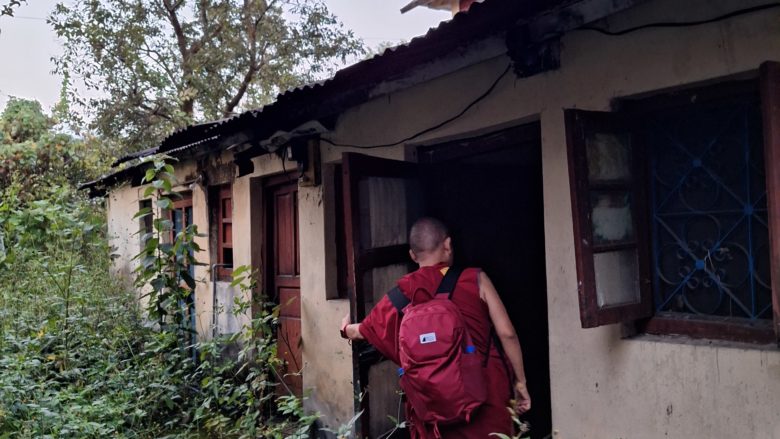
Resurrected from its monsoon hiatus, a gentle mountain wind cycles down the streets of Bir, a small Himachali village inhabited predominantly by Tibetan refugees and parasailing tourists. Standing on the roof of a long-abandoned house, our student cohort watches as the wind lightly tosses the faded and torn prayer flags strung over the top of the building. Below our feet is the childhood home of Geshe Damchoe-la, the Tibetan monk who has guided us over the past months. It is here, in this small, neglected corner of the village, where so much of the Tibetan Studies program begins to make sense.
The house is an otherwise nondescript structure, with the paint on its facade graying from a lack of attention, but what Damchoe-la’s childhood home shelters inside is fascinating. Within its two stripped-down bedrooms (which used to house a family of twelve) is a peculiar web of Tibetan memories: a portrait of the Dalai Lama solitarily graces one corner, a painting of the Buddha auspiciously overlooks one bare bed frame, and various stories of the crumbling house’s former Tibetan life populate every corner through Damchoe-la’s recollections. It is definitely no ordinary Indian home. Some people like to describe Tibetan exile spaces as “a slice of Lhasa,” but the house is not in Tibet, and it is certainly no Potala Palace. Instead, it’s a special and intentional headspace, a place that exists physically within India but is spiritually not really all there, to put a positive spin on the phrase. In other words, for those who have lived inside of the house, it was a means of recreating, if not Tibet itself, something that (sub)consciously suggests Tibet. The house holds so much of the essence of Tibet that a child could grow up in the house and, after living there for forty years, be able to talk about Tibet even without ever having the opportunity to travel there.
It’s a lot like Tibetan Studies, which drags you halfway across the world just for a monk to talk to you about someplace else. This doesn’t at all count towards its demerits, though. If anything, it’s the point of it all. Tibetan Studies is about the exile community and the stories that exiles tell about themselves and Tibet. It is a story most strongly embodied in India. This isn’t a narrative you could understand by looking at Tibet through a spyglass or a dictionary. It requires conversation with monks in the classroom and over coffee, even if this takes place outside of Tibet.
It’s not an easy conversation to have, and especially not in a single article. A little cheaply, I think it would be unfair to reproduce it here. The only real way to effectively appraise such a conversation would be to join it, to become a conversant who speaks within it (and maybe go on the program yourself). Although I can’t definitively review the content of Tibetan Studies, what I can say is that I’ve enjoyed the conversations I’ve had so far, and the coffee, too.

